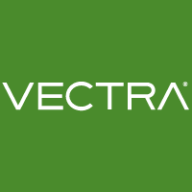

Vectra AI and Palo Alto Networks Advanced Threat Prevention are leaders in cybersecurity solutions. Palo Alto Networks seems to have an advantage with its comprehensive integration capabilities and user appreciation for its protective features.
Features: Vectra AI uses AI and machine learning to reduce alerts and correlate threats with hosts, providing deep security insights with network metadata capture. It assists in risk score aggregation, helping SOC analysts prioritize threats. Palo Alto Networks Advanced Threat Prevention offers integration with other Palo Alto tools, enhancing malware detection, traffic inspection, and application behavior checking with signature-based prevention.
Room for Improvement: Vectra AI experiences integration challenges with third-party systems, such as SIEM, and requires better management of false positives and threat context. Palo Alto Networks can improve its IPS capabilities and simplify its complex licensing models, as well as expanding email protection features.
Ease of Deployment and Customer Service: Vectra AI offers flexible deployment across on-premises, cloud, and hybrid environments, receiving praise for its responsive technical support, albeit with reliance on specific key personnel. Palo Alto Networks provides similar deployment options and is recognized for its robust customer service, characterized by quick responses and problem-solving.
Pricing and ROI: Vectra AI, while costly, provides value by reducing threat response times, offering ROI as efficient security operations. Its pricing can be prohibitive for some. Palo Alto is also expensive, but its extensive capabilities and scalability cater well to larger enterprises, with ROI seen in preempting attacks and optimizing security measures.
It offers insights into security threats, despite the inability to quantify its impact in numbers.
The payback period is roughly six months.
I rate technical support from Palo Alto as eight out of ten.
I have proof of this rating - when I escalate a case, I receive a reply from TAC support after two days.
Overall, I find the technical support from Palo Alto Networks quite good, although getting a hold of the TAC can be challenging and sometimes requires long phone calls.
The support is quite reliable depending on the service engineer assigned.
When I create tickets, the response is fast, and issues are solved promptly.
Customer support receives a rating of nine out of ten due to being very supportive and responding quite efficiently.
Palo Alto Networks Advanced Threat Prevention is scalable and works well wherever enforcement points exist.
Vectra AI is scalable because it can work through different kinds of solutions and is compatible with all kinds of cloud solutions.
Proper sizing of the firewall models ensures that the system does not experience crippling performance issues.
Palo Alto needs to focus on how to bring that technology to end users and how easy it is to use, especially in a hybrid environment where users work from various locations.
The behavioral detection capabilities could be expanded to address all threats at the perimeter, reducing the reliance on endpoint detection and response systems.
ExtraHop's ability to decrypt encrypted data is a feature that Vectra AI lacks.
You need to have a Linux server, and from the Linux server, you must perform AI tasks, and there is a lot to be handled in the back end.
All threats, including hacking attempts, should be comprehensively addressed.
Palo Alto Networks Advanced Threat Prevention requires an add-on license and is considered expensive compared to competitors like Cisco AMP and FortiGate firewalls.
Vectra is cheaper in terms of pricing and features compared to Darktrace.
It is very acceptable when you compare it with Darktrace, for example.
As traditional signature-based mechanisms become less effective due to the evolving nature of attacks, this solution's focus on behavioral analysis is crucial.
We are satisfied with the analytic capabilities of Palo Alto Networks Advanced Threat Prevention, especially the reporting features available in the Palo Alto portal in terms of their application visibility interface, which is very good for us to get visibility on all critical applications and the associated users, as well as the risks associated with every category of traffic.
Our company used Vectra AI to detect the malicious threats and viruses before they could cause more damage, and we successfully stopped the threats.
Alert noise was dramatically reduced by nearly 80%, allowing SOC analysts to focus more on true threats, which made them more productive and resulted in higher operational efficiency.
There are extensive out-of-box detection capabilities.
| Product | Market Share (%) |
|---|---|
| Vectra AI | 7.6% |
| Palo Alto Networks Advanced Threat Prevention | 5.6% |
| Other | 86.8% |

| Company Size | Count |
|---|---|
| Small Business | 9 |
| Midsize Enterprise | 4 |
| Large Enterprise | 14 |
| Company Size | Count |
|---|---|
| Small Business | 9 |
| Midsize Enterprise | 10 |
| Large Enterprise | 29 |
Palo Alto Networks Advanced Threat Prevention is a cloud-based security service that combines cutting-edge technologies, including machine learning, artificial intelligence, and expert human monitoring, to effectively thwart advanced threats like malware, zero-day attacks, and command-and-control threats. It offers inline protection, scrutinizing all network traffic irrespective of port, protocol, or encryption. An integral component of Palo Alto Networks' security platform, it enjoys widespread adoption across diverse organizations. With its robust security capabilities, it's an ideal choice for entities of all sizes, particularly those in high-risk sectors such as finance, healthcare, and government agencies, seeking to safeguard their networks from a broad spectrum of advanced threats.
Vectra AI specializes in AI-driven threat detection and response, empowering security teams to detect attacker activities, correlate alerts, and enhance visibility across modern environments. The emphasis on high-fidelity threats enables rapid and confident incident response in network, identity, and cloud settings.
Ranked highly across several categories, Vectra AI is renowned for its AI-driven threat management capabilities, offering substantial insights into attack cycles. The integration with platforms and focus on key accounts aids in improved threat detection and response times. PeerSpot gives it an average rating of 8.6, and it's frequently compared to Fortinet FortiGate. Popular among large enterprises, it's favored by professionals in the computer software industry, accounting for significant research interest.
What are Vectra AI's key features?In industries like large enterprises and computer software, Vectra AI is crucial for network visibility and threat detection. It ensures security across private and cloud infrastructures, with users leveraging it to identify malicious activities and enhance threat management through AI-driven alerts and integration with existing security tools.
We monitor all Intrusion Detection and Prevention Software (IDPS) reviews to prevent fraudulent reviews and keep review quality high. We do not post reviews by company employees or direct competitors. We validate each review for authenticity via cross-reference with LinkedIn, and personal follow-up with the reviewer when necessary.